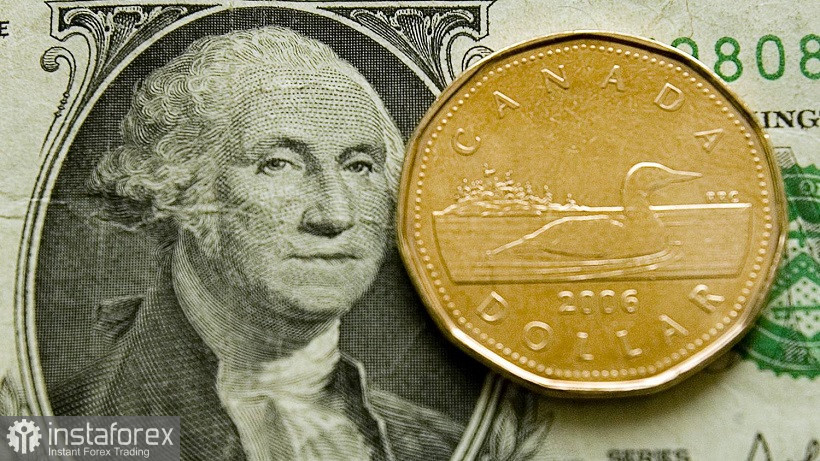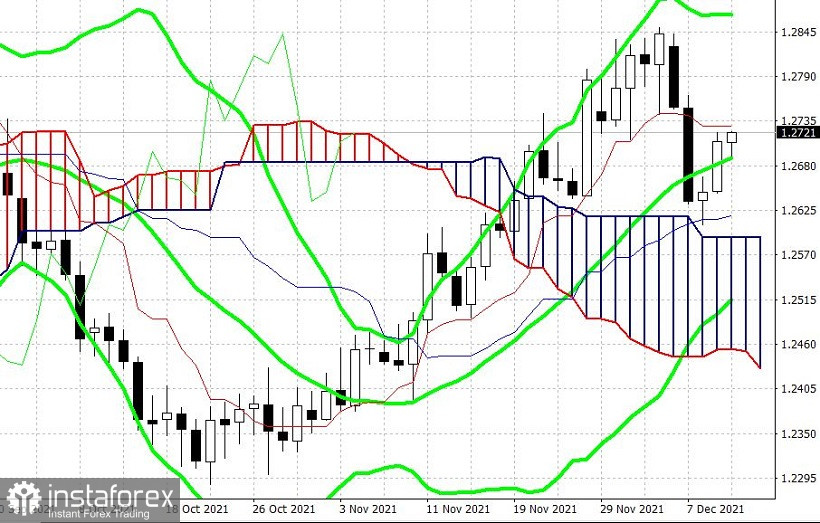The Canadian dollar is losing its position., It has lost more than a hundred points this week against the US currency, despite the general uncertainty in the dollar bulls. It's all the fault of the Bank of Canada, which summed up the results of its last meeting this year on Wednesday.
The Canadian regulator did not justify the "hopes placed on it", disappointing with its restrained rhetoric and the absence of a "hawkish character". For almost the entire year, the Bank of Canada voiced more aggressive rhetoric compared to the Federal Reserve, and this fact, as they say, "bribed". The Canadian Central Bank began to reduce QE in the first half of the year (becoming the first of the G7 Central Banks to begin gradually curtailing anti-crisis measures), and in October, the regulator announced the end of the stimulus program altogether. Meanwhile, the Fed decided only in November to begin a gradual normalization of monetary policy.
In view of this, it is not at all surprising that the Canadian dollar has been showing "competitiveness" relative to its American counterpart for many months. At the beginning of this year, the pair was trading in the area of 1.2700-1.2750, but it fell to the base of 1.20 in the spring. The 700-point march took place amid the general strengthening of the US dollar, which suggests that the Canadian one was getting more expensive "on its own", and not at the expense of the weakness of its southern neighbor.

To date, the USD/CAD pair is trading in the range of 1.2700-1.2800. In other words, this means that the Canadian dollar returned to its original position, from where it started the current year. This is largely due to the fact that the rhetoric of the Bank of Canada and the Fed representatives has "leveled off", reaching a kind of parity. As already known, the Fed is going to accelerate the pace of reduction of the stimulus program in December.
Nevertheless, it should be noted that the Canadian regulator was ahead of the Fed for a long time, and not only in the matter of curtailing QE. This was only the first point of the "hawkish program" of the Canadian regulator. The second point was the announcement of an interest rate increase. Following the results of the October meeting, the head of the Bank of Canada, Macklem, did not announce specific time targets, but assured journalists that the regulator could raise the rate "earlier than previously expected." Given the fact that the regulator moved the timing of the curtailment of incentives, traders then assumed that the Central Bank would decide on this step in the first half of 2022. Some experts have even indicated a double increase in the rate, the first of which should happen next summer. For example, Wells Fargo Bank then announced a forecast according to which the Canadian regulator will raise the rate by 25 basis points in June or July next year, and by another 25 points at one of the last meetings of 2022.
Taking into account such hawkish conclusions following the results of the final October meeting, traders planned to hear relevant hints following the results of the December (last) meeting this year. However, the Bank of Canada did not force events, taking a wait-and-see position and voicing vague formulations regarding the prospects of monetary policy. Moreover, the Canadian regulator indicated in an accompanying statement that flooding in British Columbia (local officials called the multi-day downpours that led to flooding "the worst storm in a hundred years") would worsen disruptions in supply chains and reduce demand for some services. In particular, as a result of a natural cataclysm, the country's largest port in Vancouver interrupted its work. The members of the regulator also mentioned the emerging strain of the Omicron coronavirus, which they believe can also put pressure on economic growth.
In other words, the Bank of Canada has focused on existing risks, while overshadowing the success of the national economy. The regulator only casually mentioned that the Canadian economy received a "significant boost" in the fourth quarter, given the dynamics of labor market growth and wages. However, he made it clear that he would not rush to tighten the parameters of monetary policy. Given the hawkish "preview" at the October meeting, such nondescript results of the December meeting weakened the Canadian currency.
All this suggests that the USD/CAD pair has prospects for further growth. The Bank of Canada has already said its word, while the Fed is still holding an intrigue. If, in addition to the early curtailment of QE, the American regulator decides to raise the rate in the first half of next year (and, accordingly, hints about it at the December meeting), the Canadian dollar will react accordingly.

At the moment, the USD/CAD pair is approaching the nearest resistance level of 1.2730, which corresponds to the Tenkan-sen line on the D1 timeframe. Once it is broken, the price will be above all the lines of the Ichimoku indicator (including the Kumo cloud) and between the middle and upper lines of the Bollinger Bands indicator. In this case, the next upward target will be the 1.2860 mark, which corresponds to the upper line of the Bollinger Bands on the same timeframe.





















